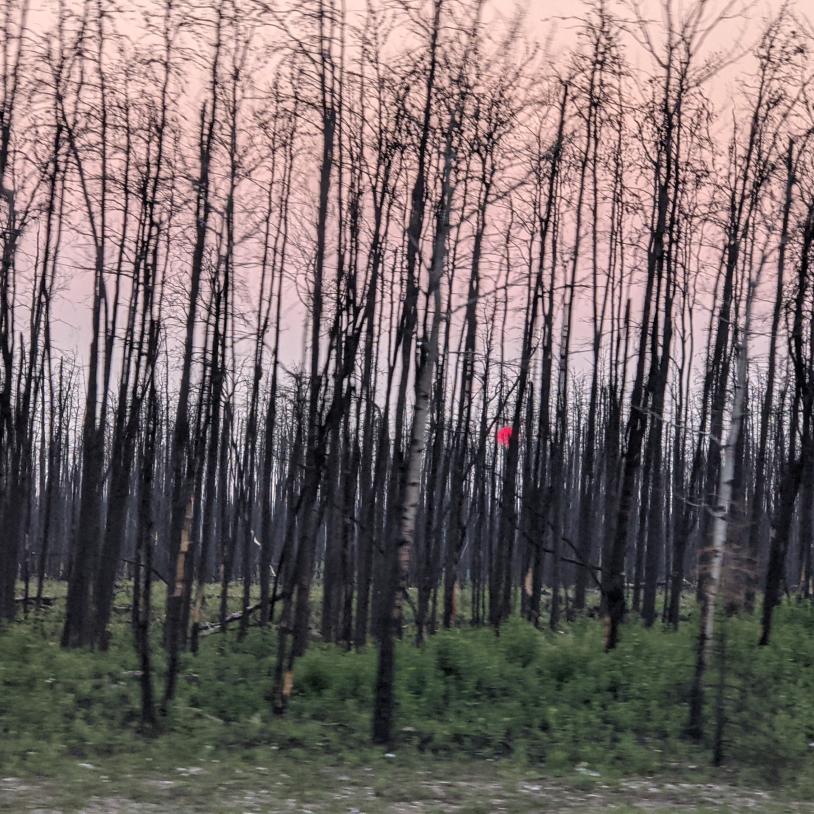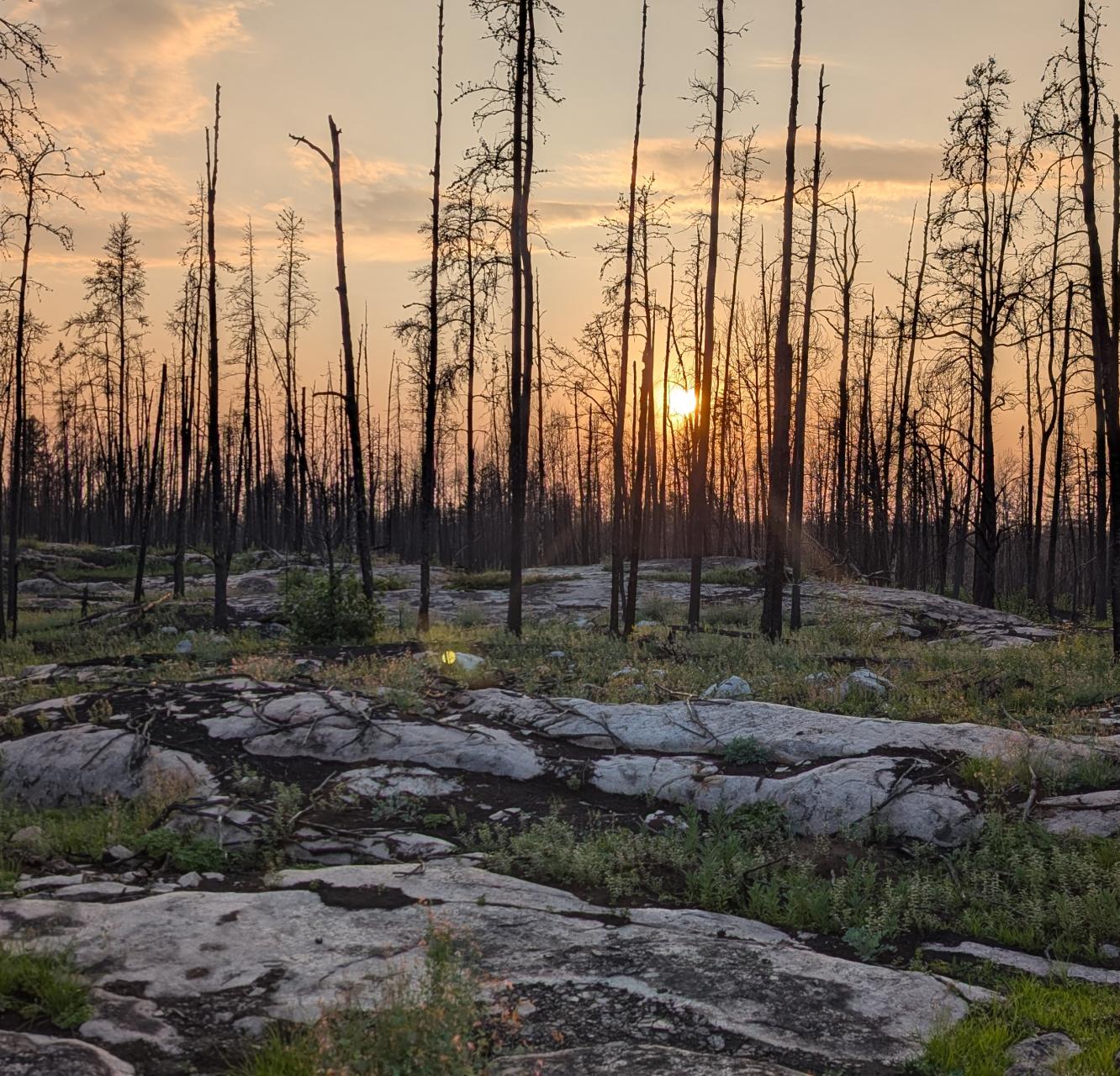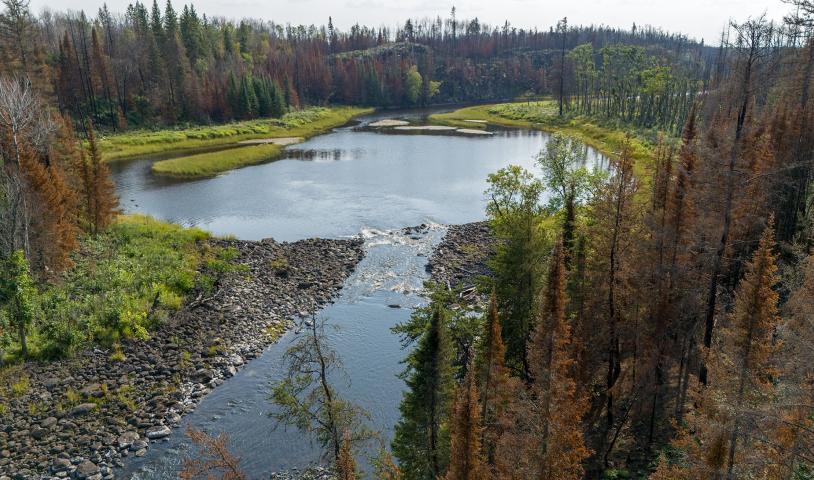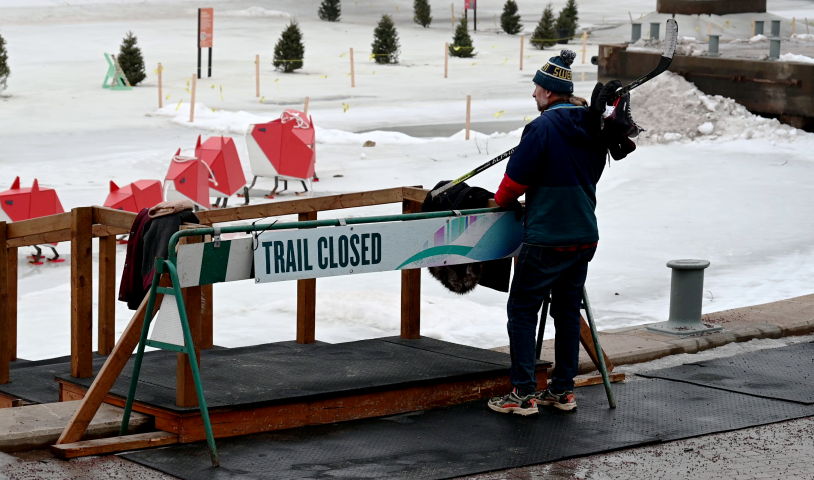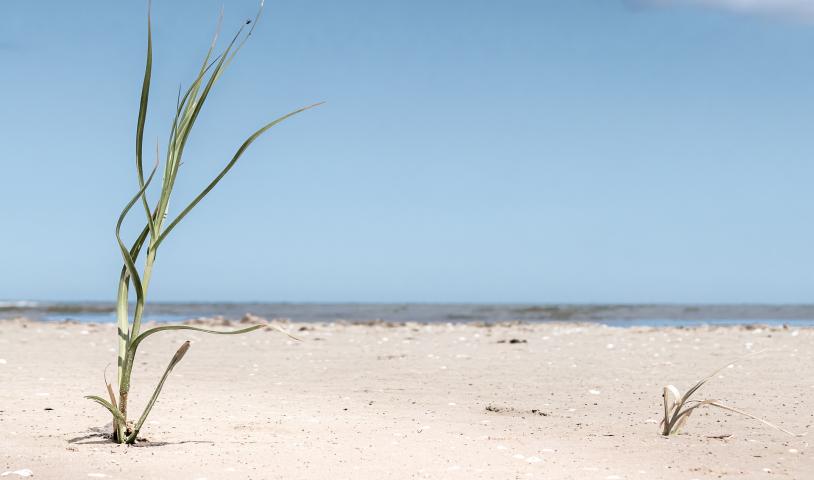Mushy rink, reason to think
Tuesday, January 12, 2021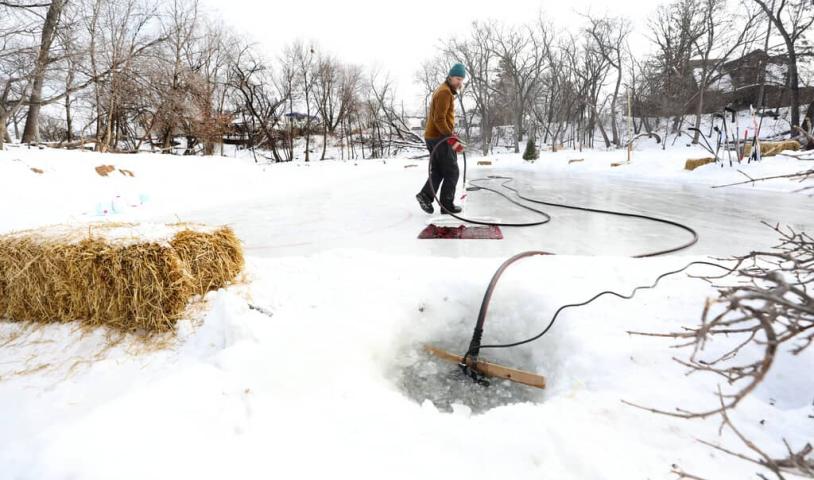
Environmentalist, neighbourhood iceman using his battle with mild temperatures as fodder for climate-change conversations
Eric Reder slides across the rink in his heavy black boots, towing behind him his extremely rudimentary "Zamboni" fashioned out of PVC pipe and a mat, smoothing fresh water across the ice.
The attached hose coils and kinks occasionally, linked to a small water pump at the rink’s edge used to suck Seine River water in and expel it across the ice surface, leaving behind a beautiful sheen reflecting the blissful blue sky on a mild day in mid-January. It’s -4 C. The historical average temperature high for this day, Environment Canada data shows, is -13.2 C.
Reder, a Manitoba environmentalist and resident in Winnipeg’s Archwood neighbourhood, decided an outdoor rink was just the fix this year — a bright spot for his family and neighbours in a winter marked by a public-health lockdown. But he points to a corner of the rink where the sunshine reflects; that corner has been taking days to freeze properly after maintenance because of the warm weather, he says.
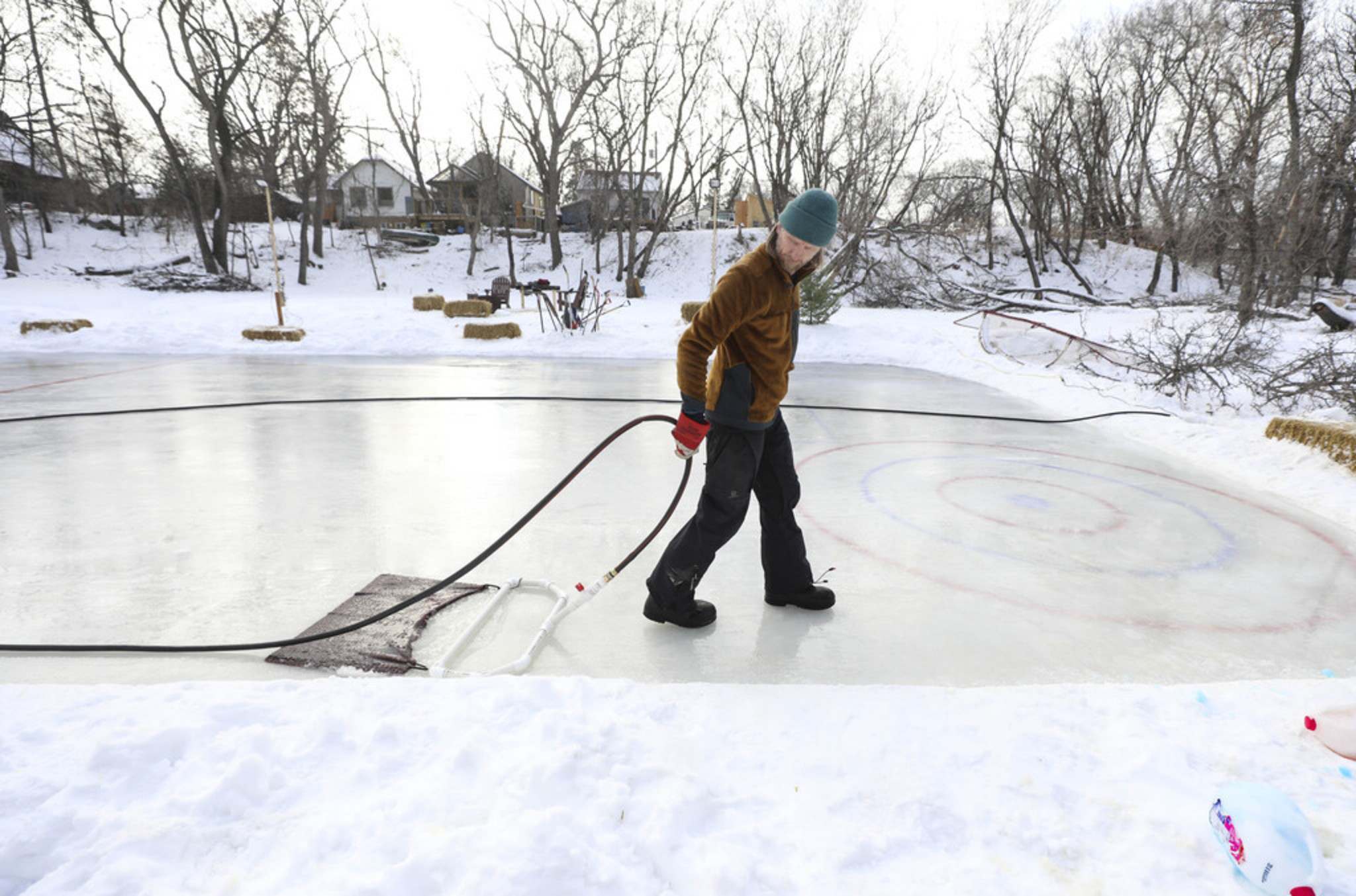
Eric Reder uses a homemade zamboni to flood his rink that he made on the Seine River in front of his home. He can’t believe how much work is going into maintenance of the rink because it won’t stay frozen — in Winnipeg — in January.
Reder has had to contend with temperatures above zero some days, above-average temperatures at night and even rain surprised him in December.
"I keep seeing forecasts that say it’s going to reach lows of -11 C, then I wake up to see if I can work on the rink and it’s only -4 C. We know that northern latitudes are going to warm more with climate change," he said.
Through his work with the Wilderness Committee, Reder is used to having conversations about climate-change impact and he’s using the rink to kick off more of them.
"It’s about starting these conversations with people, giving them an entry point," he said. Sometimes it leads to talking about the fact that greenhouse-gas emissions continue to rise in Manitoba, sometimes something else.
“People think of the snow and the cold in the winter as a nuisance, and warmer winters as something that we might like, but there’s all kinds of recreational and community activities that depend on the cold and snow."
— Nora Casson, associate professor and Canada Research Chair based at the University of Winnipeg.
This winter has been particularly mild, spiking well above what would be expected at this point on the calendar. An analysis done last month by Matthew Morison, a post-doctoral fellow at the University of Winnipeg, showed that conditions are on par with forecasts projected towards the end of the century.
"People think of the snow and the cold in the winter as a nuisance, and warmer winters as something that we might like, but there’s all kinds of recreational and community activities that depend on the cold and snow," said Nora Casson, an associate professor and Canada Research Chair based at the University of Winnipeg.
"And both the historical trends and the future projections are really clear: winters are getting warmer, they’re getting less snowy and they are getting shorter."
The difficulty in maintaining hockey rinks is just one example of how climate change — in addition to causing extreme weather events across the globe — is beginning to have a more subtle effect on other aspects of life, Casson said.
Because of how ubiquitous outdoor rinks are in the country, researchers at Wilfrid Laurier University began in 2013 tracking maintenance needs and use of the community sites across Canada and even into the U.S. in order to understand how climate change is altering rink dynamics.
